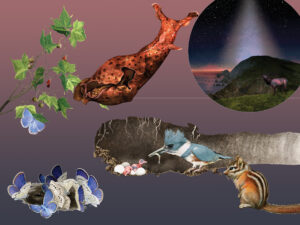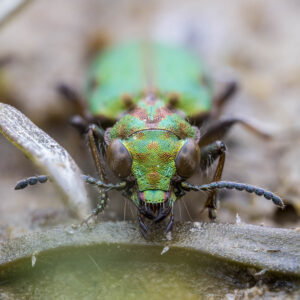Marshall Beach Trail. October 12, 2012
“Life is a journey, not a destination.” —Ralph Waldo Emerson
The trailhead to Marshall Beach begins after driving a couple of miles along the L Ranch Rd., out through the northern edge of the bishop pine forest, across some open pastureland. Just beyond the forest edge the sandy soil is riddled with badger burrows and diggings. In this driest season—more than four months since the last significant rain— the open grasslands farther along the road are grazed to nubbins exposing extensive swaths of bare ground. During October, “ground-gleaning” birds gather in large flocks in such habitat. In the feedlot around L Ranch hundreds of tricolored blackbirds forage amidst the Holstiens. “Trics” (pronounced like “trikes”) are California endemics and nearly a quarter of the world population arrives on the peninsula in the fall and remains through the winter months. Intermixed with the tricolored flock are other barren-ground specialists—Brewer’s and red-winged blackbirds, American pipit, western meadowlark, brown-headed cowbird, European starling, Eurasian collared dove. These all forage on the ground, but other species roost on the fence posts and wires above, ever vigilant for insects on the open ground—American kestrel, black phoebe, Says phoebe, even northern flickers.
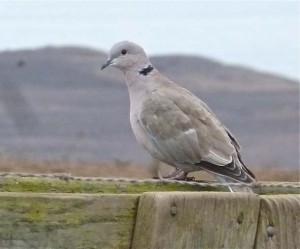

I pull over near the L-Ranch feed lot to check for some of the rarer species that tend to be attracted toward exposed soil. Suddenly, a merlin slices past, flushing a large flock of pipits. Dozens fly off and then I hear the distinctive wheezy rattle of a Lapland longspur overhead. Farther along, some green-winged teal flush from a stock pond and a flock of short-billed dowitchers forages along the shoreline. After dawdling along the road for an hour or more, I arrive at the trailhead for a short hike (1.4 mile) down the old ranch road to Marshall Beach. The trail cuts through grazed pasture before forking and heading downhill through recovering northern coastal scrub. The coyote bush is in peak bloom this time of year and both the female and male plants are in full flower. The air is redolent with the sweet, ambrosial smell of the male pollen, which it pumps out vigorously all fall.
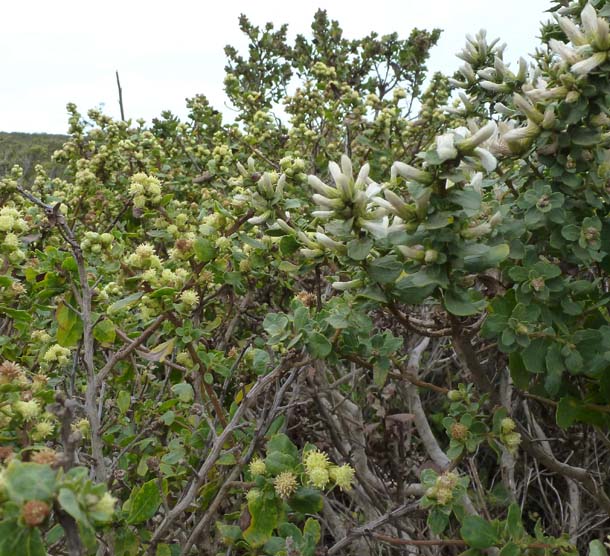
In fact, coyote bush will blooms from July through November, another example of the protracted “spring” we experience in this equable piece of the planet. This shrub is deep-rooted, drought-tolerant, and moderately fire-tolerant. Plants sprout from the root crown and roots after top-kill by fire. It is also a generous host to wildlife. A plethora of insects forage on the pollen and various mammals, birds and reptiles seek shelter under its cover.

Along the side of the path are numerous ground spider webs that have caught the morning dew.
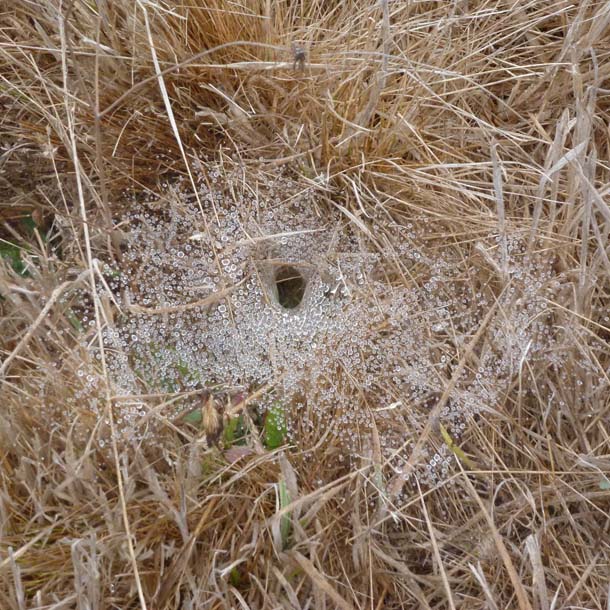
After descending the east-facing slope the trail comes to the mouth of the drainage and a forest of Monterey pine and Monterey cypress. The bird activity id concentrated here, with dozens of Violet-green Swallows pirouetting overhead, Purple Finches and Chestnut-backed Chickadees foraging through the pines. But most of the activity is in the dense understory—elderberry, thimbleberry, coyote bush, blackberry, poison oak, bracken— where shrub birds are busy chattering amongst themselves.
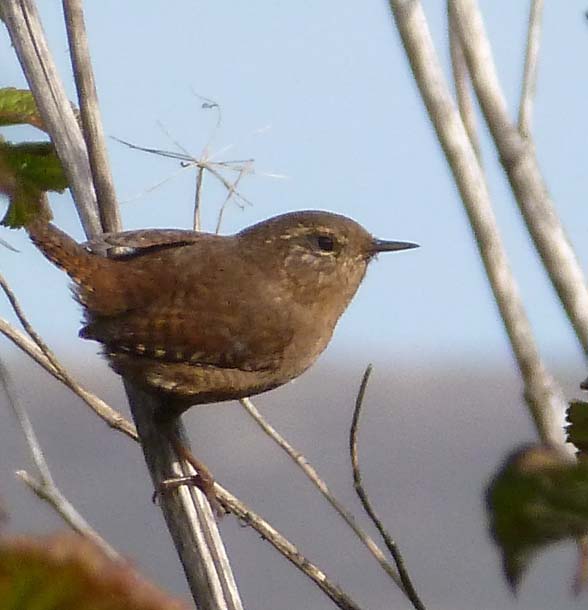
The trail daylights along the eastern shore of Tomales Bay, on a lonely beach in a calm cove. The empty cabin on the far end of the beach reminds me of the sculptor, envelope artist, fisherman, and raconteur and who once lived out here, Clayton Lewis (1915-1995). He was a peaceful soul in a peaceful place. May it always be so. (Learn more about him at claytonlewis.net.)
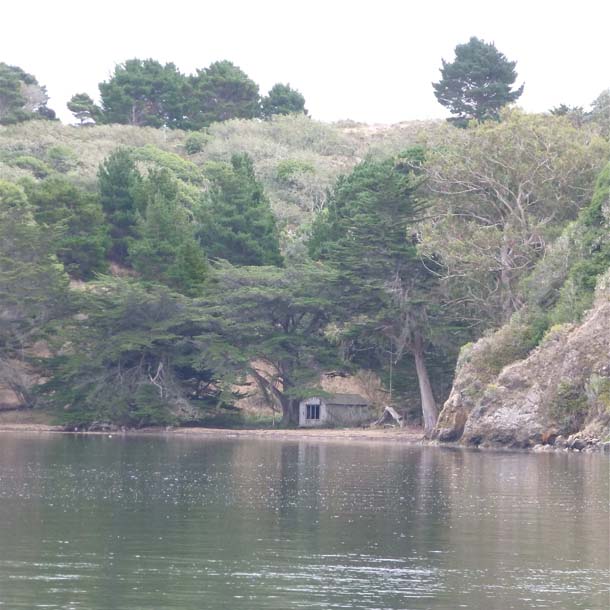
Trail notes: An easy to moderate walk on a gravel road, 2.8 miles round-trip. The approach to Marshall Beach is rather steep and may be slippery in the rainy season. Check out the mapped version of this hike on our Trailfinder.


